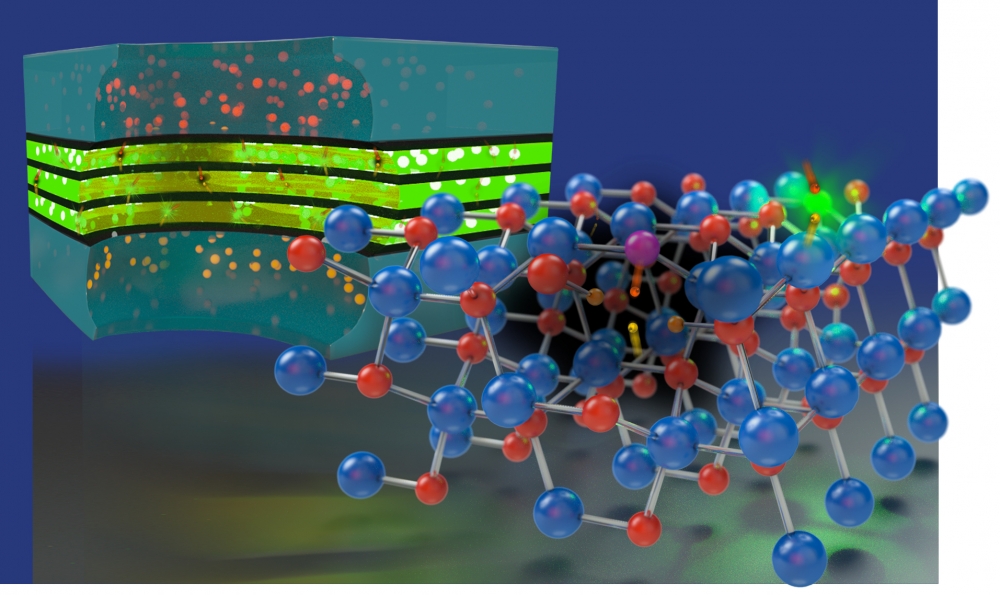Using state-of-the-art theoretical methods, UCSB researchers have identified a specific type of defect in the atomic structure of a LED that results in less efficient performance. The characterization of these point defects could result in the fabrication of even more efficient, longer lasting LED lighting.
“Techniques are available to assess whether such defects are present in the LED materials and they can be used to improve the quality of the material,” said materials professor Chris Van de Walle, whose research group carried out the work.
 |
|
A conceptual illustration of how defects in a crystal lattice might contribute to nonradiative recombination of electrons and holes in LEDs. (Illustration credit of Peter Allen) |
In the world of high-efficiency solid-state lighting, not all LEDs are alike. As the technology is utilized in a more diverse array of applications — including search and rescue, water purification and safety illumination, in addition to their many residential, industrial and decorative uses — reliability and efficiency are top priorities. Performance, in turn, is heavily reliant on the quality of the semiconductor material at the atomic level.
“In an LED, electrons are injected from one side, holes from the other,” explained Van de Walle. As they travel across the crystal lattice of the semiconductor — in this case gallium-nitride-based material — the meeting of electrons and holes (the absence of electrons) is what is responsible for the light that is emitted by the diode: As electron meets hole, it transitions to a lower state of energy, releasing a photon along the way.
Occasionally, however, the charge carriers meet and do not emit light, resulting in the so-called Shockley-Read-Hall (SRH) recombination. According to the researchers, the charge carriers are captured at defects in the lattice where they combine, but without emitting light.
 |
|
Chris Van de Walle.(Courtesy Image of UCSB) |
The defects identified involve complexes of gallium vacancies with oxygen and hydrogen. “These defects had been previously observed in nitride semiconductors, but until now, their detrimental effects were not understood,” explained lead author Cyrus Dreyer, who performed many of the calculations on the paper.
“It was the combination of the intuition that we have developed over many years of studying point defects with these new theoretical capabilities that enabled this breakthrough,” said Van de Walle, who credits co-author Audrius Alkauskas with the development of a theoretical formalism necessary to calculate the rate at which defects capture electrons and holes.
The method lends itself to future work identifying other defects and mechanisms by which SRH recombination occurs, said Van de Walle.
“These gallium vacancy complexes are surely not the only defects that are detrimental,” he said. “Now that we have the methodology in place, we are actively investigating other potential defects to assess their impact on nonradiative recombination.”
The paper has been published as a Featured Article in the April 4 issue of Applied Physics Letters [APL 108, 141101 (2016)], with an accompanying figure on the cover of the journal.
This work was funded by U. S. Department of Energy Office of Science, and by Marie Sklodowska-Curie Action of the European Union.
- See more at: http://www.news.ucsb.edu/2016/016653/becoming-crystal-clear#sthash.vfxoaWTS.dpuf













